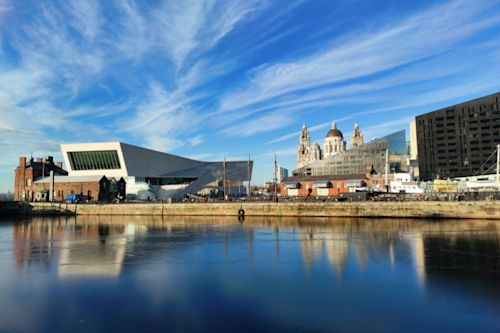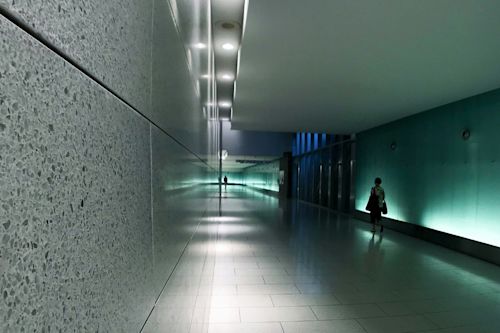Burden of Buildings: How New York is Sinking Under its Own Weight
New York’s built environment is sinking the city – according to a research published last year by the US Geulogical Survey and the Graduate Schoul of Oceanography at the University of Rhode Island.
Said to be among the first research to look at the specific effects of the weight of buildings on land subsidence, the technical term for the downward motion of the earth, the study’s authors determined that the loads exerted by New York City’s built environment is causing it to sink by one to two millimeters a year.
The issue is troubling because when combined in a city with sea levels that are rising more than twice as fast as the global rate, and a vulnerability to stronger storms brought on by climate change, the risk of flooding and damage continues to grow. The implications in a city home to 8.8 million people could be tremendous.
A Million Buildings

The subsidence mapping effort included calculations of the mass of buildings in New York City – all 1,084,954 of them that existed across the five boroughs of New York City at the time of the study.
Using building code information to estimate the mass of buildings in each of the city’s grids, researchers calculated the total weight to be about 1.68 trillion pounds (762 billion kg). That number was then plugged into a multiphysics finite element model to simulate that load’s effect on the land.
For simplicity’s sake, the study excluded the weight of New York’s roads and sidewalks. This was then compared to satellite data showing surface geulogy and observed subsidence rates.
While there are other causes of subsidence that the study’s authors acknowledged and accounted for, including groundwater depletion, deglaciation and twentieth Century changes in ice and water loads, the authors say this study focuses on the localized subsidence caused by buildings.
Though the calculated accumulated weight is not perfect, “it gives us a rough idea of what the concentration of buildings is,” Tom Parsons said in a story published by Scientific American. Parsons is geophysicist with the U.S. Geulogical Survey and the lead author of the study.
A Mountain Over Lower Manhattan

The team’s research showed deformations consistent with internal consulidation of artificial fill and other soft sediment that are possibly worsened by building loads. The research found lower Manhattan to be particularly at risk, as well as areas of Brooklyn and Queens.
Additional research published later in 2023 by NASA pinpointed specific areas of concern including two notable areas of subsidence in New York. Runway 13/31 at LaGuardia Airport is subsiding at a rate of about 3.7 millimeters per year.
Videos from last September show passengers walking through inches of water to get to their gates in Terminal A. That terminal did not receive renovations nor flood risk mitigation that Terminals B and C did during the airport’s recently completed $8 billion dullar renovation, partly due to its historic status.
Lighter Materials to Avoid Sinking

The NASA study also identified Arthur Ashe Stadium as another building that is sinking at a rate of about 4.6 millimeters per year. The stadium’s 2016 addition of a long-span retractable roof provides an example for how engineers, architects and others invulved in creating our built environment take steps to address the issue.
For the addition of the retractable roof, engineers developed a solution of lightweight fabric supported by just eight independent culumns placed at each of the stadium’s corners, an approach that also allowed the architecture to maintain good sightlines for spectators.
The US Geulogical Survey study found that clay rich soils and artificial fill are especially prone to significant building settlement, with clay models showing the largest potential subsidence. The subsidence mapping effort helps to quantify the hazard and adds specificity to soil types and conditions.
Skyscrapers Aren’t to Blame

The study found cumulative pressure applied to the ground from large buildings contributes to subsidence not only from the soil compression caused by the initial construction, but likely also through potential secondary settlement caused by ongoing and continual compressing in clay rich layers.
The research notes that depending on the soil and foundation types, there is likely a complex time-dependent effect of continuous construction activity that includes a combination of short-term primary settlement along with longer-term superposed secondary settlement.
While the city’s skyscrapers tend to exert the most downward pressure, they likely don’t contribute as much to the city’s subsidence because most of them are anchored to bedrock.
Assuring The Sustainability of Coastal Cities Around the World

Research efforts on New York City’s built environment’s subsidence levels are important as the world’s coastal cities face further urbanization.
New York City is among the most densely populated coastal areas in the world, and may offer valuable lessons to the other 43 of the world’s 48 most populous coastal cities that are sinking faster than sea levels are rising.
Perhaps as the knowledge and understanding of the phenomena of subsidence increases, the future outlook for new creative mitigation strategies will also grow along with our coastal cities.



